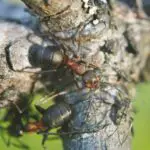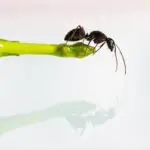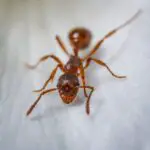Why Do Ants Release Formic Acid?
Whether it is for defense, attack or disinfecting, ants release formic acid. It is a chemical compound derived from the Latin word for ant, formica. It is used as an antibacterial substance, a descaler and a food preservative. It is also a good industrial cleaner.
Formic acid was first isolated by English naturalist John Ray in 1671. He collected dead ants and crushed their bodies to extract the acid. He later identified the acid as methanoic acid.
Formic acid is produced by some ants, such as carpenter ants. These ants have been known to bite and invade houses. Some species of ants release the acid in their venom.
Some ants also release the acid when they die. Some birds place live ants in their feathers. This behaviour may be used to exhaust the ants’ defenses. Alternatively, it may be used to control bird parasites.
The yellow crazy ant (Formicianae formica) is a destructive species. It has been found to eat a variety of animal tissue. It has also been responsible for causing damage to seabirds and red crabs on Christmas Island.
Some ants use formic acid to neutralize the venom of rival ants. Formic acid is produced in a special gland in the abdomen of some ants. This gland also produces a substance that is used to spray on victims.
Formic acid is present in the venom of stinging nettles and many insects. It is also used by humans as a food preservative. It has also been used to kill varroa mites. It is a good descaler, but at high concentrations, it can cause severe skin irritation.








